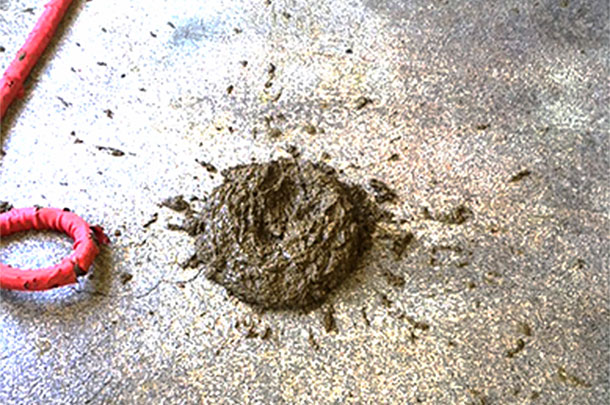For some reason, our collective addiction to feed additives and precision feeding has come so far that we tend to ignore some of the basics. We have the ability to add anything we want to any mix and dial in our intakes three places to the right of the decimal point, but what good is all of that if you are mixing the wrong ingredients in the first place?
I was recently on a dairy where the cows were in good condition and the ration was balanced on paper, but the cows were telling a completely different story. Milk production was struggling to maintain 60 pounds in Holsteins, and the components were just OK at 3.6 butterfat and 3.01 protein. As I walked through the herd and looked over the cows, hardly any were chewing their cud. I estimated 25 percent were chewing while at rest instead of a more practical goal of 50 percent. Most cows had little rumen fill even though the bunks had plenty of feed. The manure was also all over the place for consistency. Most cows were very loose, and there was a noticeable amount of corn kernels in all of the manure.
At first glance, looking over the feed and the low number of cows chewing their cud, I felt pretty strongly that this was a fiber issue. They just needed something to chew on to stimulate some healthy rumen function. The components didn’t signal to me that these cows were suffering from acidosis because usually butterfat below 3.5 would indicate a rumen health issue. As I dug deeper, this herd was almost 300 days in milk. With so many stale cows, I assumed they were propping up the butterfat, and we could draw a strong conclusion that the components of the fresh cows would be much lower.
With the basic cow information in hand, I went to the ration. The diet claims 57 percent forage, but that isn’t the story the cows are telling. The cud chewing and manure both tell me that the paper is lying.
Looking closer at the concentrate mix, I discovered there was sodium bicarb in the mix, but you know what? There was no free-choice bicarb in the barn anywhere. Have our rations become so advanced that we can just skip over one of the simplest indicators of cow health? Even though free-choice bicarb in the pens won’t solve every problem, if you are filling the tubs once a week and all of a sudden they are empty daily, that would signal a change to rumen health.
So what was the problem? What changed with these cows that were in good condition but were just not ruminating they way they should?
The calculation for the percent of forage in the ration was a downward spiral for this herd. They were incorporating 15 pounds of dry matter from snaplage. Snaplage acts more like high moisture in the rumen and less like corn silage. Snaplage must be counted as a concentrate for rumen health. Once I treated snaplage as a concentrate in the mix, the diet flips to 46 percent forage, and that is much closer to how the cows were acting. They didn’t have enough effective fiber to promote saliva production.
So what did we change?
We put free-choice sodium bicarb in every group for 250 cows. We brought 2.5 pounds of dry hay into the mix, and we replaced the snaplage with dry corn.

In a matter of eight days, those cows ate 40 bags of sodium bicarb. They didn’t lick it or nibble it; they ate it. The 2.5 pounds of dry hay gave some immediate effective fiber to chew on to stimulate natural saliva production, and incorporating the dry corn instead of the snaplage slowed down the rate of passage on the manure to give the cows a chance to digest more of the grain in the mix. The manure now looks so much better.
Overall, in less than three weeks, we have now raised the butterfat to a 3.85 from a low of 3.6. Cud chewing is much more obvious, and the cows look like they have more rumen fill. Production will come after we get the gut straightened out and work on getting the days in milk down.
Even though we have access to all kinds of technology and feed additives, the old standby of free-choice sodium bicarb right in the groups can go a long way to keep rumen health up through the bumps of feed changes. It might even give you a little boost in butterfat.
For more Dairyhack nutrition articles, visit the Dairyhack website. ![]()

-
Jim VanDerlinde
- Dairy Producer, Consultant
- Hillview Dairy
- Lewisburg, Pennsylvania
- Email Jim VanDerlinde
PHOTO: After introducing free-choice sodium bicarb and adding dry hay and corn to the ration, the herd’s manure looks much better, components are up and cud chewing is much more obvious. Photo by Jim Vanderlinde.



